上海交大赵大海关于新冠疫情第30次在电视台访谈评论:武汉全民核酸检测任务艰巨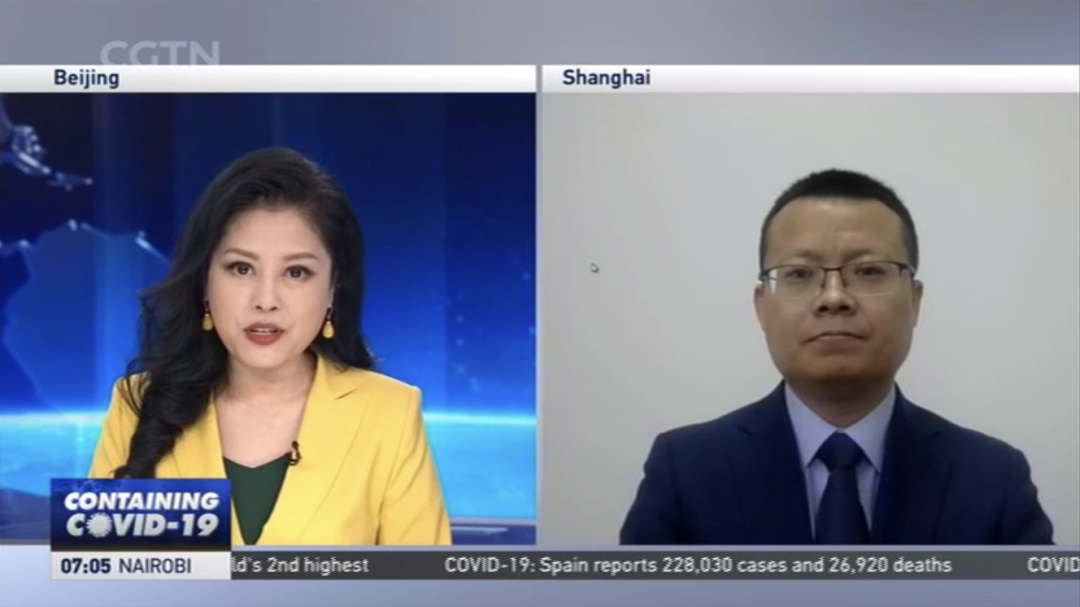
上海交通大学国际与公共事务学院博士生导师、上海交通大学-耶鲁大学卫生政策联合研究中心执行主任赵大海,对于冠肺炎疫情暴发与防控第18次在中央电视台进行直播评论,也是第30次在央视、上视进行访谈评论。在2020年5月13日中午12点的中央电视台英语频道CGTN《环球瞭望》节目,赵大海就武汉市要求在十天内完成全市所有居民核酸检测进行了直播解读和评论。现将主要内容翻译并摘录如下。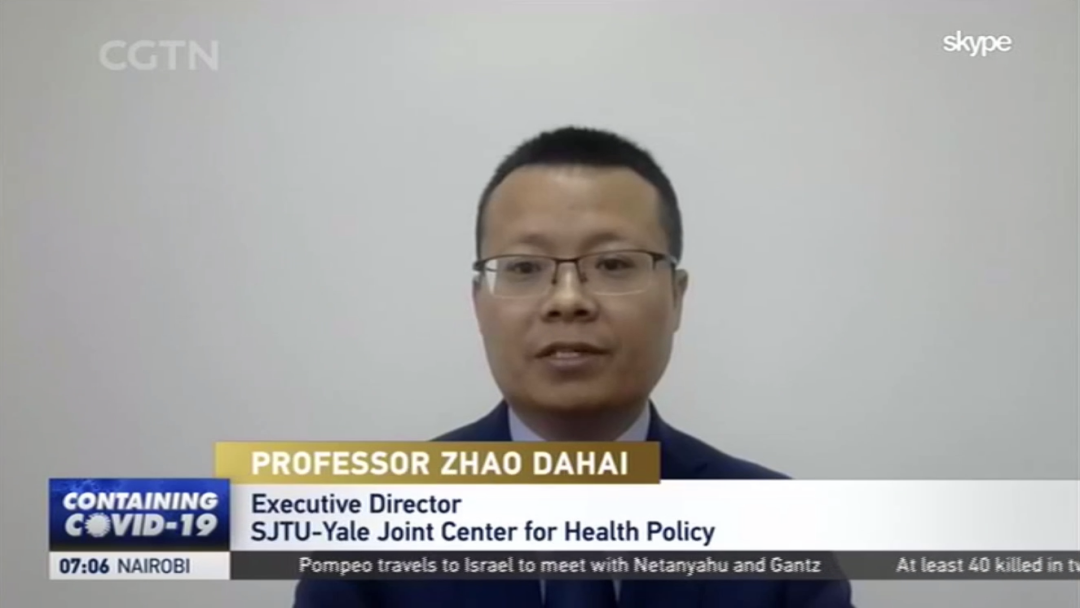
主持人:武汉现在决定对全市所有人口进行核酸检测的理由是什么?
赵大海:5月9日和10日,武汉发现6例新冠肺炎确诊病例。考虑到在5月9日之前的一个多月里,武汉没有发现新的确诊病例,我认为武汉地方政府想采取保守的措施,来保持来之不易的抗击新冠肺炎疫情的成果。因此,他们在5月11日决定对武汉全体市民进行核酸检测。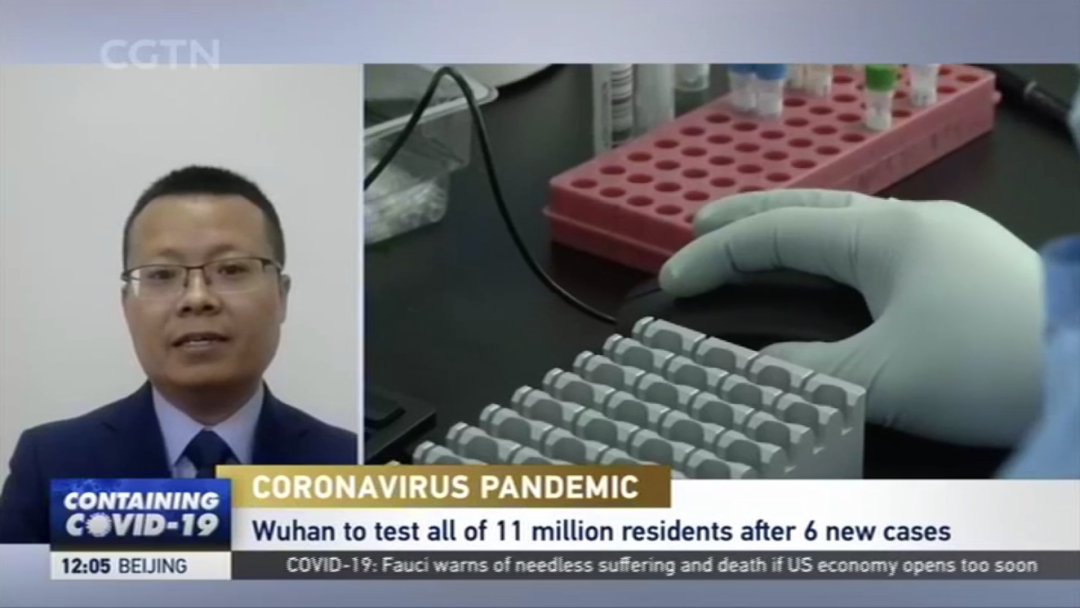
主持人:武汉市有关部门表示,检测可在10天内完成,但全市有1100万人口,有什么困难吗?
赵大海:首先,在10天内对1100万人进行核酸测试是一项艰巨的工作。即使武汉可以在10天内完成大量的核酸测试,但如何保证核酸测试的质量并不容易。众所周知,核酸检测的准确性不是很高,如何监督核酸试验的过程和质量,对武汉市民的核酸检测至关重要。其次,据我所知,血清抗体测试可能是进行全市居民全部检查的良好补充手段。与核酸检测相比,血清抗体的IgG相对稳定,更容易和更便宜。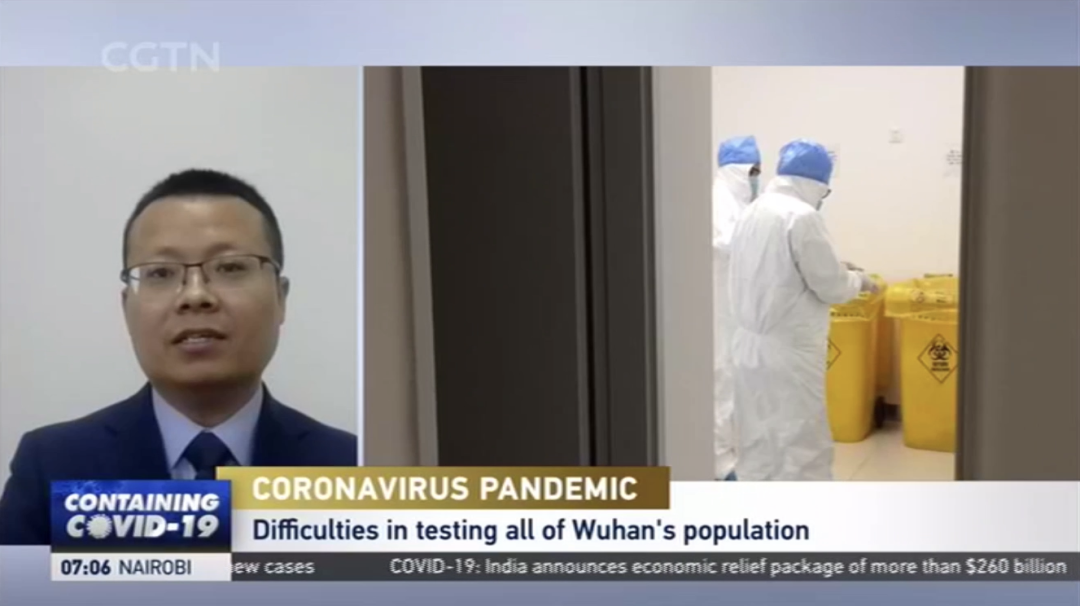
主持人:武汉每个人的核酸检测信息如何帮助我们更好地了解新冠肺炎病毒?
赵大海:与筛查相比,对所有人都进行检测的普查一定能更好地了解武汉新冠肺炎的整体情况,并提供出更有意义的信息。对于这一点,是无需争论或证明的。除了能发现武汉市新冠肺炎的无症状感染者或遗漏的病例外,在武汉全体市民中进行核酸检测对于了解哪些人群是易感染新冠肺炎的主要人群、哪个传播渠道是主要渠道等都具有重要的科学意义。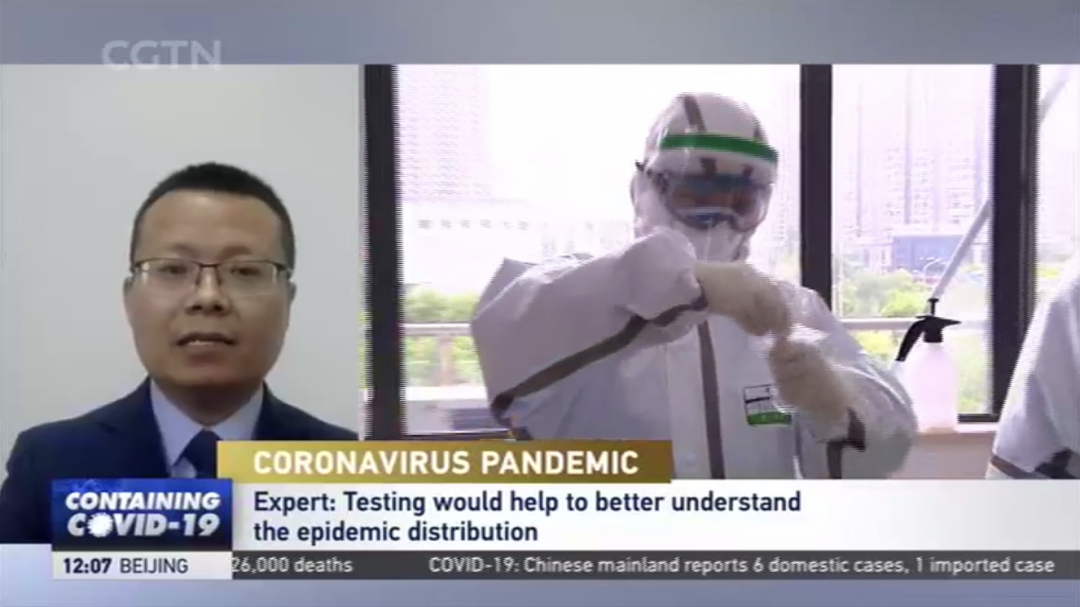
通过这次普查,我们可以进一步了解武汉新冠肺炎暴发的总体情况,将为中国和全世界其他地区抗击新冠肺炎疫情提供非常有意义的信息和政策参考。此外,中国其他城市将基于武汉的全民核酸检测,可做出是否有必要在所有人中进行核酸检测的决定。此外,它可能还会为防止未来传染病的大流行提供出一些有价值的信息和政策参考。
供稿者:国务学院
日期:5月14日
Dahai Zhao' 30th comments on TV during the Pandemic: A Herculean Task of Testing All 11 Million Residents in Wuhan
Dahai Zhao, a doctoral supervisor at School of International and Public Affairs of Shanghai Jiao Tong University and Executive Director of Shanghai Jiao Tong University-Yale University Joint Research Center for Health Policy, has been interviewed by CGTV for the 18th time (the 30th time by CGTV / DFTV) since the COVID-19 pandemic. At 12:00 on May 13, 2020, Zhao commented on Wuhan officials were planning to engineer a city-wide campaign of nucleic acid testing over 10 days on “Global Watch”.
Anchor: What is the reasoning for Wuhan’s decision to test all population now?
Zhao: 6 New confirmed cases of COVID-19 were found in Wuhan on May 9th and 10th. Considering no new confirmed cases had been found in the last more than one month before May 9th. I think Wuhan local government wants to take a conservative measure to keep the hard-won achievements of combating COVID-19, therefore they decided to conduct the nucleic acid tests for all citizens in Wuhan on May 11th .
Anchor: Wuhan authorities say testing can be completed in 10 days, but the city has a population of 11 million, what are the difficulties?
Zhao: First, it is a tough job for conducting the nucleic acid tests among 11 million people in 10 days. Even though Wuhan can finish the huge amount of nucleic acid tests in 10 days, how to guarantee the quality of nucleic acid tests is not easy. It is well known that the accuracy of nucleic acid test is not very high, how to supervise the process and quality of nucleic acid tests is crucial for the nucleic acid test for all citizens in Wuhan. Second, as far as I know, the serum antibody test may be a good supplementary test for all citizens. Compared with nucleic acid test, IgG of serum antibody is relatively more stable and much easier and cheaper to be tested.
Anchor: How would nucleic acid test information of everyone in Wuhan help us to get a better understanding of the coronavirus?
Zhao: Compared with screenings, census for all people must offer much more meaningful information to know all facts of the transmission of COVID-19 in Wuhan. It is not necessary to argue or prove it. Besides of finding the asymptomatic or missing cases of COVID-19 in Wuhan, to conduct nucleic acid test (NAT) among all citizens in Wuhan is meaningful to offer scientific evidence to know which population is the key population of infecting COVID-19; which transmission tract is the major tract, etc. Through the census, we may find the general framework of the previous pandemic of COVID-19 in Wuhan, and it will offer much meaningful information and policy references for combating COVID-19 in other areas in China and in the world. Further, other cities in China will get a conclusion whether it is necessary or not to conduct the nucleic acid tests among all people. In addition, it may supply some information and policy references for preventing the potential pandemic.
Contributor: SIPA, SJTU
Data: May 14

